Welcome to our comprehensive exploration of Selaginella Willdenowii, the enchanting plant species also known as spike moss or club moss.
Prepare to be captivated by its glistening green foliage and delve into the intriguing world of this botanical wonder.
From its origins and biodiversity significance to its unique habitat and historical importance, we will uncover the secrets of Selaginella Willdenowii.
Whether you have a green thumb or are simply fascinated by the science and culture of leaves, we have something for everyone.
We will provide expert tips and care advice for growing Selaginella at home, discuss its role in wild ecosystems, and inspire you to incorporate Selaginella Willdenowii into your landscaping designs.
Join us on this journey as we unravel the mystique of Selaginella Willdenowii.
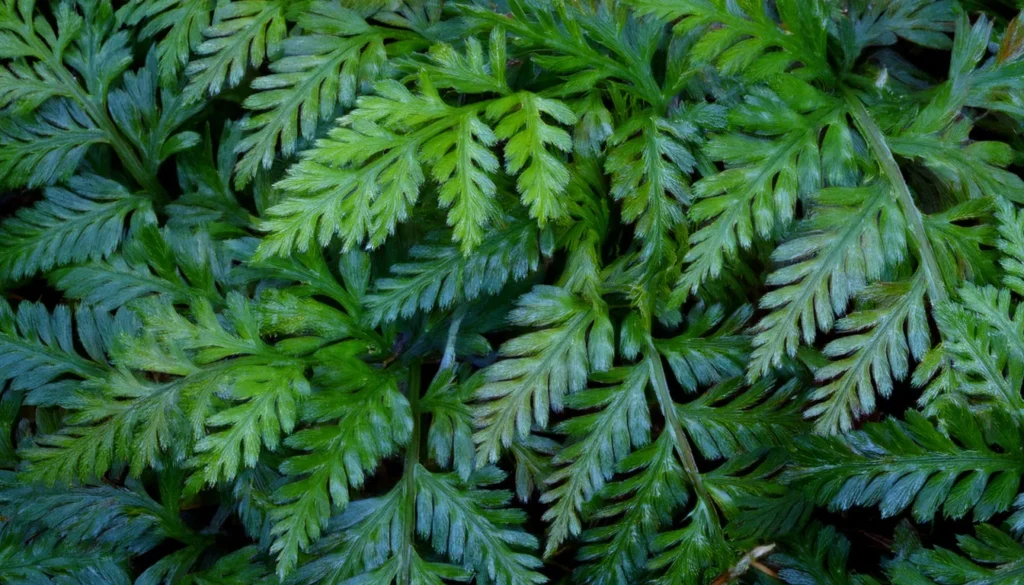
Key Takeaway
- Selaginella Willdenowii, also known as spike moss or club moss, is a fascinating plant with glistening green foliage.
- Its origins are rooted in biodiversity conservation and play a crucial role in supporting ecosystems.
- Understanding the unique habitat requirements of Selaginella Willdenowii is essential for successful growth.
- Exploring the botanical wonder of Selaginella Willdenowii unveils its intriguing physiology and photosynthesis process.
- For aspiring botanists, we provide expert care advice and tips for cultivating Selaginella Willdenowii at home.
Quick Stats
| Attribute | Details |
| Family Name | Selaginellaceae |
| Origin | Native to tropical regions worldwide |
| Height | 5-15 cm (2-6 inches), depending on growth conditions |
| pH Range | 5.5 – 7.5 |
| CO2 Requirement | Low |
| Growth Rate | Slow |
| Care Level | Easy to Moderate |
| Color Form | Green, with some varieties exhibiting hints of blue or bronze |
| Water Conditions | Moist, well-draining substrate; prefers high humidity |
| Max Size | Typically remains small, with a compact growth habit |
| Lighting | Low to Moderate |
| Supplements | Minimal; benefits from occasional liquid fertilizer |
| Placement | Foreground to Mid-ground in terrariums/vivariums |
| Propagation | Easily propagated through division of rhizomes or by spores |
What Is Selaginella Willdenowii?
In this section, we will provide an in-depth understanding of Selaginella Willdenowii.
We will explore the origins of this intriguing plant species and its significance in biodiversity conservation.
Additionally, we will uncover the unique habitat requirements of Selaginella Willdenowii, shedding light on the specific conditions that allow it to thrive.
Origins And Biodiversity Significance
Selaginella Willdenowii, also known as spike moss or club moss, has a rich history dating back millions of years.
It is believed to have originated in tropical regions and can be found in various parts of the world today.
This plant species holds great biodiversity significance as it contributes to the overall ecological balance and provides habitats and resources for a wide range of organisms.
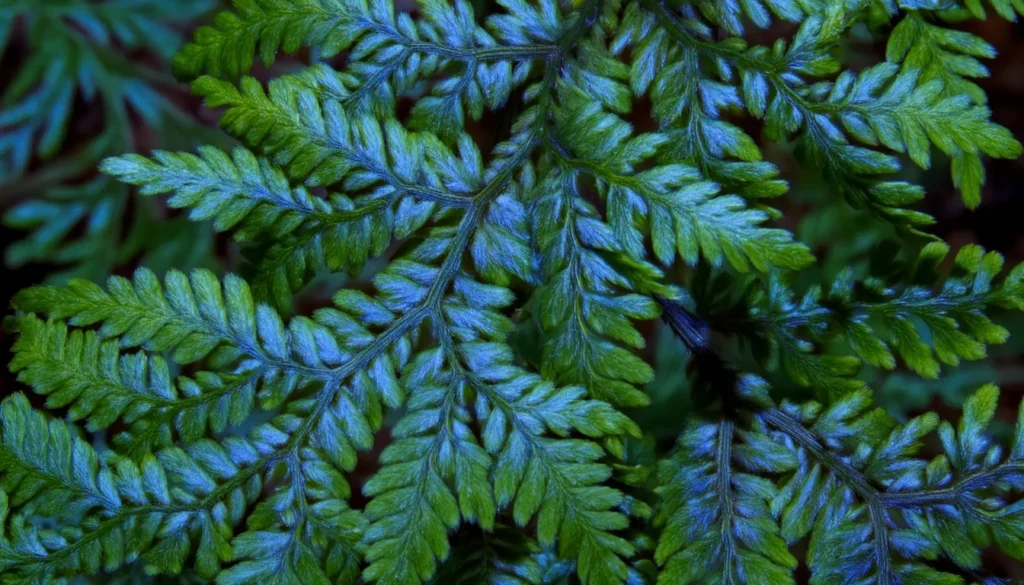
History
In this section, we will explore Selaginella Willdenowii’s rich history and uncover its cultural and scientific significance throughout the years.
This remarkable plant species has long fascinated botanists and plant enthusiasts, making notable contributions to botanical research and our understanding of plant life.
Let’s delve into the historical uses and discoveries associated with Selaginella Willdenowii.
Throughout history, Selaginella Willdenowii has been used for various purposes.
Ancient civilizations valued its medicinal properties and believed it possessed mystical qualities.
It was often used in traditional herbal remedies to treat ailments and promote overall well-being.
As scientific knowledge expanded, researchers began studying Selaginella Willdenowii to unlock its secrets.
It became a subject of interest for botanists and plant physiologists, who sought to understand its unique characteristics and adaptations.
Through careful examination and experimentation, they uncovered fascinating details about its growth patterns, reproductive strategies, and environmental interactions.
Today, Selaginella Willdenowii continues to captivate scientists and enthusiasts alike.
Its historical significance and mesmerizing beauty have made it a beloved plant species in the botanical world.
We constantly expand our knowledge of Selaginella Willdenowii and its place in the natural world through ongoing research and exploration.
Lighting Needs
- Indirect, Medium to Low Light: Selaginella willdenowii prefers moderate to low levels of indirect light. It thrives in bright, filtered light rather than direct sunlight. Placing it near a window with sheer curtains or using artificial lighting with adjustable intensity can provide suitable conditions.
- Avoid Direct Sunlight: Direct sunlight can be too intense for Selaginella willdenowii and may cause leaf burn or damage. It’s essential to protect the plant from direct exposure to harsh sunlight, especially during the hottest parts of the day.
- Light Duration: Provide a consistent photoperiod of around 8 to 10 hours of light per day for Selaginella willdenowii. Mimicking natural day-night cycles helps regulate the plant’s growth and metabolic processes, promoting overall health and vitality.
- Balanced Spectrum: While Selaginella willdenowii can tolerate a range of lighting conditions, providing a balanced spectrum of light is beneficial for its growth and coloration. Full spectrum LED lights or fluorescent lights with a color temperature in the range of 5000K to 6500K are suitable options.
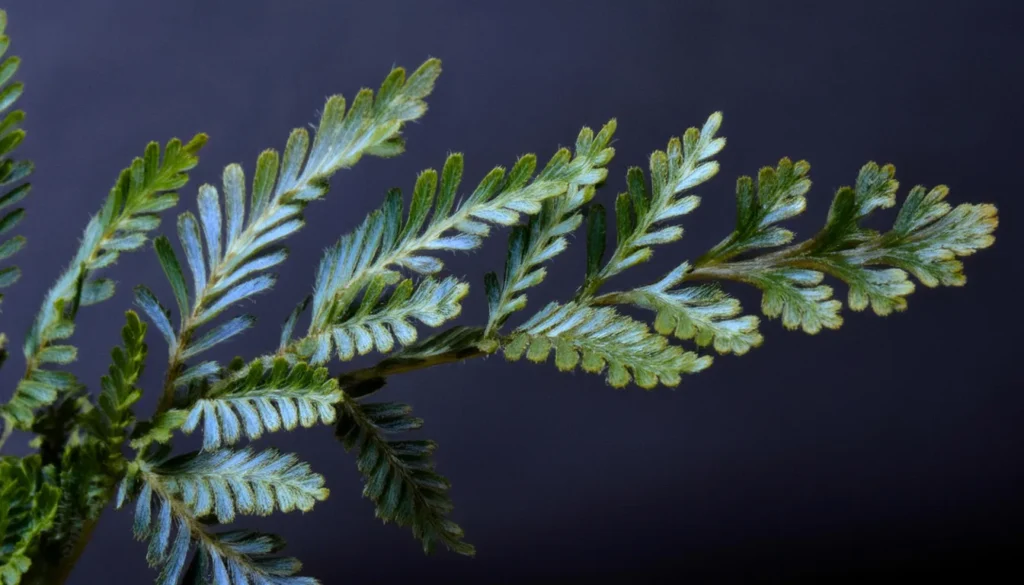
Temperature Parameter
- Temperature Range: Selaginella willdenowii prefers temperatures typical of tropical to subtropical climates. The optimal temperature range for robust growth is between 18°C to 25°C (64°F to 77°F). Within this range, the plant’s metabolic processes are most efficient, leading to vigorous growth and healthy development.
- Stable Temperatures: While Selaginella willdenowii can tolerate minor fluctuations in temperature, stability is crucial for optimal growth. Avoid sudden or extreme temperature fluctuations, as they can stress the plant and hinder growth. Provide a stable temperature environment within the optimal range to maintain plant health and vitality.
- Winter Considerations: In colder climates or during winter months, it’s essential to ensure that the temperature does not drop below the lower end of the optimal range. Sudden drops in temperature can slow down growth or even cause dormancy in Selaginella willdenowii. Using a heating system or providing additional insulation can help maintain stable temperatures during colder periods.
Optimal Water Condition
- Moisture Levels: Selaginella willdenowii prefers consistently moist but not waterlogged soil. Ensure that the soil remains evenly moist throughout the growing medium. Avoid allowing the soil to dry out completely between waterings, as this can stress the plant.
- Well-Draining Soil: Use a well-draining potting mix with a combination of peat moss, perlite, and coarse sand or bark. This type of soil allows excess water to drain away quickly, preventing waterlogging and root rot.
- Watering Frequency: Water Selaginella willdenowii regularly to maintain soil moisture. Monitor the soil moisture levels and water when the top inch of soil feels slightly dry to the touch. Water thoroughly, allowing excess water to drain from the bottom of the pot.
- Humidity: Selaginella willdenowii thrives in high humidity environments. Maintain humidity levels of 50% or higher to promote healthy growth and prevent dehydration of the foliage. Use a humidity tray, room humidifier, or mist the plant regularly to increase humidity levels.
- Avoid Overwatering: While Selaginella willdenowii prefers moist soil, it’s important not to overwater. Soggy or waterlogged soil can lead to root rot and other problems. Allow the soil to dry slightly between waterings to prevent waterlogging.
Substrate Requirement
- Well-Draining Soil: Use a well-draining potting mix that allows excess water to drain away quickly. A mix containing peat moss, perlite, and coarse sand or bark works well for Selaginella willdenowii. This type of soil prevents waterlogging and ensures adequate aeration for the roots.
- Moisture Retention: While the soil should be well-draining, it’s also important to choose a substrate that retains moisture to keep the plant hydrated. Peat moss or coconut coir are excellent moisture-retentive components that help maintain soil moisture levels.
- Acidity: Selaginella willdenowii prefers slightly acidic to neutral soil pH. Aim for a pH range between 5.5 to 7.0 for optimal growth. You can adjust the pH of the substrate using amendments like peat moss or pH-adjusting fertilizers if necessary.
- Organic Matter: Incorporating organic matter into the substrate can provide essential nutrients for Selaginella willdenowii’s growth. Composted materials such as leaf mold or well-rotted compost enrich the soil with nutrients and improve its texture.
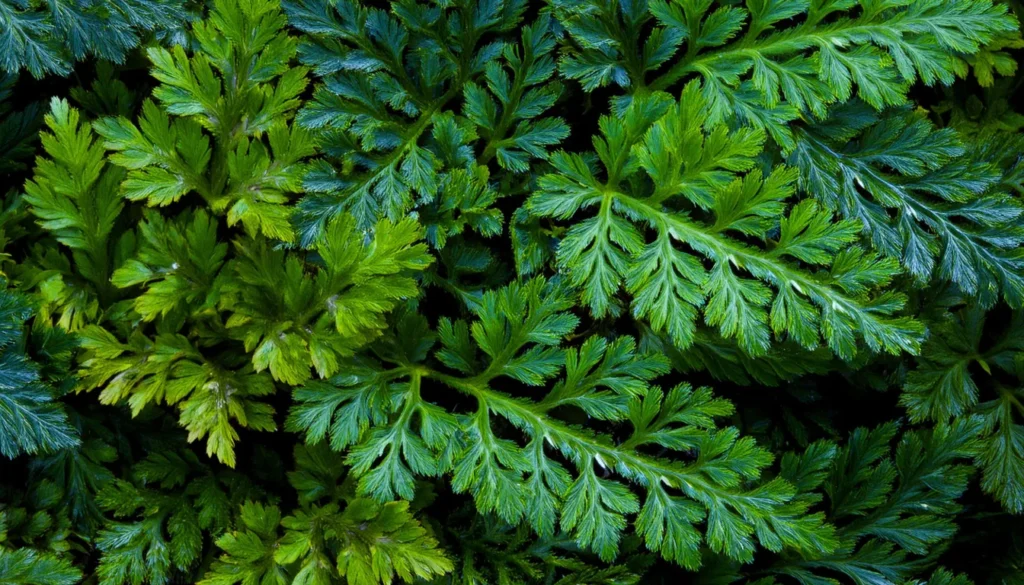
Placement Option
- Indoor Planting: Selaginella willdenowii can be grown indoors in pots or containers as a decorative houseplant. Place it on a windowsill or in a well-lit area where it can receive indirect sunlight. It’s also suitable for terrariums, where it adds lush greenery and texture to the miniature ecosystem.
- Outdoor Planting: In temperate climates, Selaginella willdenowii can be grown outdoors in shady or partially shaded areas. Plant it in well-draining soil in a garden bed, rock garden, or as a ground cover beneath trees or shrubs. Ensure that the outdoor location provides protection from direct sunlight and excessive heat.
- Vertical Gardens: Selaginella willdenowii can be incorporated into vertical gardens or living walls to add greenery to vertical spaces. Plant it in pockets or containers attached to a vertical structure, such as a trellis or wall-mounted planter. Ensure that the vertical garden receives adequate light and moisture for plant growth.
RELATED: A Guide To Cultivate Eleocharis Parvula (Dwarf Hairgrass) At Home
Recommended Tank Size
- Container Dimensions: Select a container with sufficient space to accommodate the root system of Selaginella willdenowii and allow for its growth. The container should be wide and deep enough to provide stability for the plant and prevent it from tipping over.
- Terrarium Size: If growing Selaginella willdenowii in a terrarium, choose a terrarium size that suits the dimensions of the plant and the desired layout. Ensure that the terrarium provides enough space for the plant to spread and grow without overcrowding.
- Vertical Space: Consider the height of the container or terrarium to ensure that Selaginella willdenowii has enough vertical space to grow upwards. Avoid containers that are too shallow or have limited headroom, as this can restrict the plant’s growth.
- Number of Plants: Determine how many Selaginella willdenowii plants you plan to grow and select a container size accordingly. If growing multiple plants, ensure that there is enough space between them to prevent overcrowding and competition for resources.
- Aesthetic Considerations: Choose a container or terrarium size that complements the overall aesthetic of your space and allows Selaginella willdenowii to be showcased effectively. Consider the scale and proportions of the container in relation to the surrounding decor.

Suitable Tank Mates
- Small Reptiles: Certain small reptiles like geckos, anoles, or small species of frogs can make suitable tank mates for Selaginella willdenowii. Ensure that the reptile species you choose have similar temperature and humidity requirements to the plant.
- Invertebrates: Various invertebrates such as snails, isopods (woodlice), and springtails can help maintain the terrarium’s ecosystem by assisting in decomposition and cleaning up debris. These small creatures are generally harmless to the plants and can coexist peacefully with Selaginella willdenowii.
- Terrarium-Safe Plants: Incorporate other terrarium-safe plants that thrive in similar conditions as Selaginella willdenowii. Look for species that prefer high humidity and low to moderate light levels, such as ferns, mosses, bromeliads, and orchids. These plants can complement each other aesthetically while sharing the same environmental requirements.
- Decorative Elements: Enhance the terrarium’s visual appeal by adding decorative elements such as driftwood, rocks, and natural substrate materials like sphagnum moss or coconut coir. These elements can provide climbing surfaces, hiding spots, and texture variation within the terrarium.
Nutritional Needs
- Macronutrients: Selaginella willdenowii requires essential macronutrients for healthy growth, including nitrogen (N), phosphorus (P), and potassium (K). These nutrients play vital roles in plant metabolism, cell structure, and overall health. A balanced fertilizer with a ratio appropriate for foliage plants (e.g., 10-10-10) can provide these macronutrients.
- Micronutrients: In addition to macronutrients, Selaginella willdenowii also requires various micronutrients, including iron (Fe), magnesium (Mg), calcium (Ca), and others. Micronutrients are essential for enzyme function, chlorophyll synthesis, and other metabolic processes within the plant. A micronutrient-rich fertilizer or occasional supplementation can help prevent deficiencies.
- Organic Matter: Incorporating organic matter into the soil or growing medium can provide additional nutrients for Selaginella willdenowii. Composted materials such as well-rotted compost, leaf mold, or organic fertilizers enrich the soil with nutrients and improve its texture.
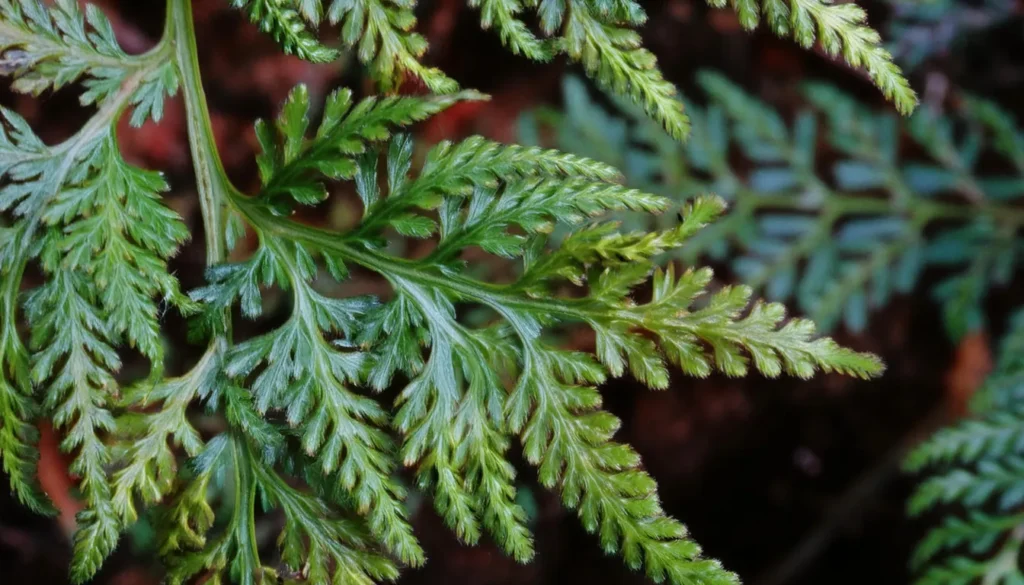
Cultivation Tips
- Humidity: Maintain high humidity levels for Selaginella willdenowii, ideally between 50% to 70%. Mist the foliage regularly or use a humidity tray to increase moisture levels around the plant. Placing the plant in a terrarium or enclosed space can help retain humidity.
- Watering: Keep the soil consistently moist but not waterlogged. Water thoroughly when the top inch of soil feels dry to the touch, allowing excess water to drain away. Avoid letting the soil dry out completely between waterings, as this can stress the plant.
- Soil: Use a well-draining potting mix with good moisture retention. A mix containing peat moss, perlite, and coarse sand or bark works well for Selaginella willdenowii. Ensure the container has drainage holes to prevent waterlogging.
- Fertilization: Feed Selaginella willdenowii regularly during the growing season with a balanced, water-soluble fertilizer diluted to half strength. Apply fertilizer every 4 to 6 weeks to provide essential nutrients for healthy growth.
- Pruning: Trim back any yellow or dead foliage to maintain the plant’s appearance and encourage new growth. Selaginella willdenowii can become leggy over time, so pruning can help keep it compact and bushy.
RELATED: Echinodorus Red Flame To Aesthetically Design Your Aquarium
Benefits Of Planting Selaginella Willdenowii
- Aesthetic Appeal: This plant features delicate, feathery foliage with vibrant green hues, adding beauty and visual interest to indoor spaces, terrariums, and gardens. Its unique texture and coloration make it an attractive addition to any botanical display.
- Low Maintenance: This plant is relatively low maintenance and easy to care for, making it suitable for beginner gardeners and indoor plant enthusiasts. It requires minimal watering and can thrive in moderate light conditions, making it a versatile choice for various environments.
- Natural Air Purification: Like all plants, this plant contributes to air purification by absorbing carbon dioxide and releasing oxygen during photosynthesis. By incorporating Selaginella willdenowii into indoor spaces, you can improve air quality and create a healthier environment for occupants.
- Humidity Regulation: Selaginella willdenowii thrives in high humidity environments and can help regulate moisture levels in indoor spaces. Placing Selaginella willdenowii in bathrooms, kitchens, or other humid areas can help maintain optimal humidity levels and prevent dry air-related issues such as respiratory discomfort.

Conclusion
Throughout this article, we have embarked on a journey through the enchanting world of this plant.
From its origins and biodiversity significance to its unique habitat and historical importance, Selaginella Willdenowii has proven to be a botanical wonder that captures the imagination.
We have delved into the intricate physiology of spike moss, exploring its adaptations and the role of photosynthesis in sustaining its glistening green appearance.
For those with green thumbs, our expert tips and care advice will ensure the successful growth of this plant in your own home.
In the wild, this plant plays a vital role in supporting biodiversity, and we have highlighted the importance of habitat preservation initiatives to safeguard this remarkable plant species.
For those looking to incorporate this plant into their designs, we have provided insights into its role in modern landscaping trends, as well as tips for creating stunning terrariums and vivariums.
From the science and culture of leaves to effective maintenance and care practices, we have explored the various aspects that make this plant truly extraordinary.
Its ecological interactions and unique climate adaptations further contribute to its mystique.
Frequently Asked Questions
What Is The Role Of Selaginella Willdenowii In The Wild?
This plant serves an ecological role in the wild by providing habitat and resources for various organisms, contributing to ecosystem biodiversity.
How Can I Incorporate Selaginella Willdenowii Into My Designs?
This plant is a popular choice for modern landscaping trends and can be creatively integrated into terrariums and vivariums for stunning aesthetic appeal.
What Is The Science And Culture Of Leaves?
The science and culture of leaves explore the historical significance and scientific discoveries surrounding leaf structures and their importance in human history.
What Maintenance And Care Practices Should I Follow For Selaginella Willdenowii?
Proper pruning, grooming, and effective pest and disease management techniques are essential for maintaining your Selaginella plant’s health and desired shape.
How Does Selaginella Willdenowii Support Biodiversity?
This plant provides habitat and resources for various organisms, contributing to ecosystem functioning, supporting biodiversity, and promoting ecological balance.
- Unveiling The Wonders Of Riccia Fluitans In Aquascapes - August 7, 2024
- Vallisneria Gigantea Var. Guide To Care And Cultivation At Home - July 31, 2024
- Vesicularia Dubyana Care & Growth Guide Tips For Beginner Gardeners - July 30, 2024
